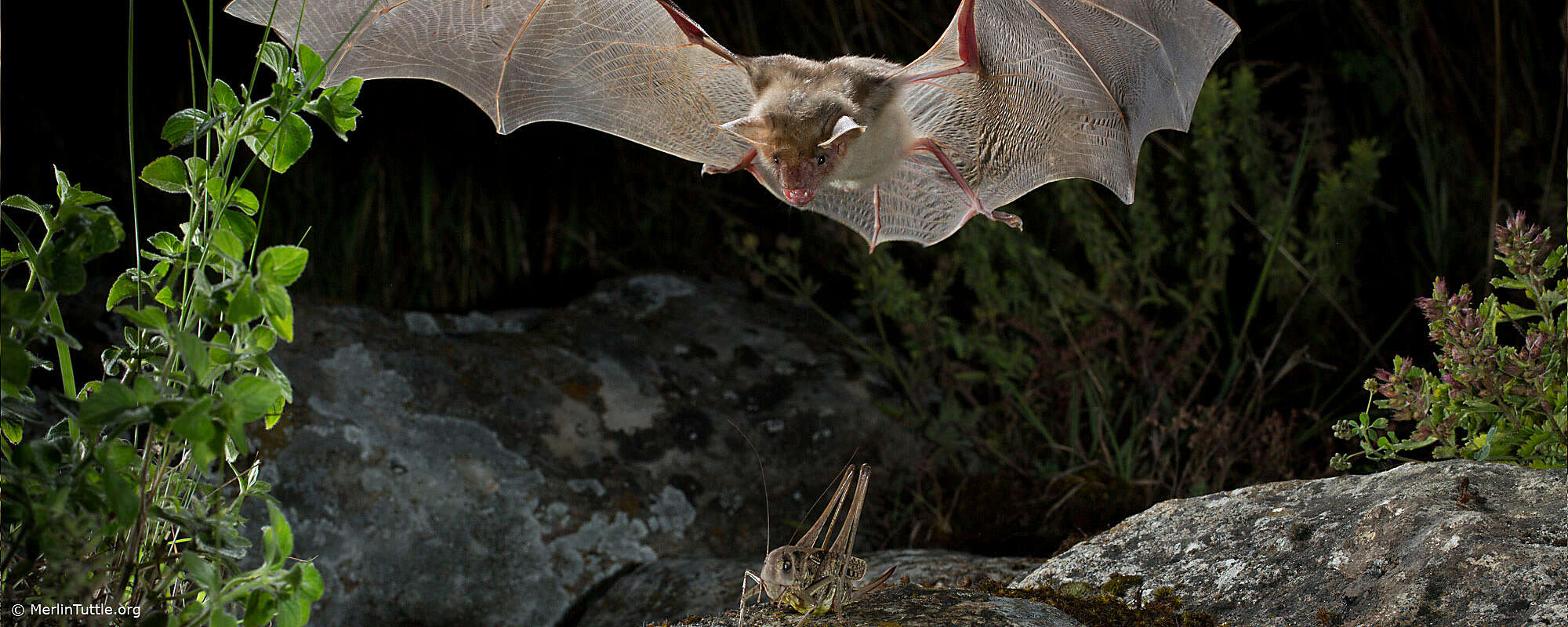
Although several mammals have the ability to glide, bats are the only mammals that have developed the ability to fly actively. Within vertebrates, active flight has evolved independently only in birds, pterosaurs and, of course, bats. All these groups of animals use their forelimbs for flight, which, however, have been modified very differently from the original forelimb. While birds are arm-winged and need their feathers to fly, bats are hand-winged, which is where the scientific name Chiroptera comes from. In the case of bats, the ability to fly is ensured by a flight skin stretched between the extremities, e.g. between the fingers.
The shape of the wings is decisive for the animals' flying abilities. Basically, bats can be divided into two basic types based on their flight behaviour. Bats with broad wings are characterised by a particularly agile but slow flight. An example of this type of flight is the lesser horseshoe bat (Rhinolophus hipposideros), which can fly through very dense vegetation with its extremely broad wings and light weight and can catch insects from the ground in shaking flight. Long and narrow wings, on the other hand, indicate fast flight. Examples of this are the Common noctule (Nyctalus noctula), which is fast and high-flying.
The wing shape is measured by the so-called aspect ratio and the wing loading. The aspect ratio is calculated by dividing the square of the wingspan by the wing area. For the wing loading, the weight of the bats is divided by the wing area. Basically, the wider the wings, the more agile but also slower the respective bat species is.
Compared to birds (the white-throated needletail Hirundapus caudacutus can reach 170 km/h), the flying speed of most bats is relatively low. For instance, the fastest bat in Europe, the long-winged bat (Miniopterus schreibersii), usually flies no faster than 50 to 55 km/h. However, new studies show that bats have been underestimated so far and that individual species such as the Mexican free-tailed bat (Tadarida brasiliensis) can also reach top speeds that, at 160 km/h, are comparable to those of birds. More than for their speed, however, bats are known for their extraordinary agility. The many muscles involved in flight are responsible for this. Bats are able to accelerate and brake very quickly. This aerial acrobatics not only benefits them when hunting, but also when landing. In order to land, their feet must point upwards, which is achieved by a strong rotation of the body just before landing.
Many bats are capable of so-called shaking flight, in which the animals appear to stand still in the air for a short time. However, this form of flight, which can also be observed in some bird species (e.g. hummingbirds) and insects, is energetically very costly. Only species with a low wing loading, i.e. a low weight in relation to the wing area, are capable of shaking flight. To save as much energy as possible, bats have coupled wing beating, breathing and echolocation. Therefore, they emit their echolocation calls simultaneously with the downstroke of the wing.
Many bat species are adapted to carry large weights in addition to their own body weight. In the case of carnivorous species, this primarily concerns large prey, which are taken to the bats' night roosts after capture and only eaten there at rest. In addition, females of many species have to carry their young during flight to colonise a new day roost. It is not uncommon for mothers to fly with young weighing 50% or more of their own body weight. On the other hand, mothers do not take the young with them on hunting flights, as it would limit the mother's manoeuvrability too much.
you're not there yet? Then register directly:
register for projects
register as teacher
Sie sind noch nicht dabei? Dann direkt anmelden. Jetzt Registrieren